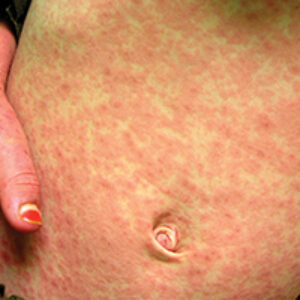
Measles Outbreak in Clark County - 74 Cases and Almost Over
With the last case confirmed on March 18, the Clark County measles outbreak that started at the end of December may finally be nearing an end – 74 cases in Washington have been reported (73 in Clark County, one in King County) and four in the Portland, OR area as of April 16. Public health will declare the outbreak over after two incubation periods (42 days) without new cases. The highly contagious viral illness has occurred in communities with populations of unimmunized individuals. In Clark County, only three of the case had documentation of a single MMR vaccination; the rest were unimmunized or had unverified immunization status. Children, especially under 10 years of age, have been most affected.
More than $1 million has been spent by Clark County Public Health and the Washington State Department of Health (DOH) in combating the outbreak. And it still isn’t over. In January, Governor Jay Inslee declared a state of emergency to assist in diverting funds to outbreak control. Staff from health departments both within and outside of Washington state, including from Spokane Regional Health District (SRHD), have contributed hundreds of hours to assist in control efforts. Hundreds of susceptible individuals have been under daily active monitoring throughout the outbreak. School exclusions, a pillar of measles control in school settings where cases have exposed non-immune individuals, have kept hundreds of students out of about a dozen affected schools.

| Ages of cases: | Immunization Status: |
|---|---|
| 1 to 10 years: 53 cases | Unimmunized: 63 cases |
| 11 to 18 years: 15 cases | Unverified: 7 cases |
| 19 to 29 years: 1 cases | One MMR vaccine: 3 cases |
| 30 to 39 years: 4 cases |
| Hospitalization: | Date of last confirmed case: |
|---|---|
| 1 case | Monday, March 18 |
If there is a bright side to this outbreak, it could be argued that attention has been raised to the dangers of measles and the disease’s impact to the public health and healthcare sectors. MMR immunizations in Washington state increased significantly as compared to the same period last year (4,898 doses administered through March 2 compared with 1,750 in 2018). The immunization debate has been at the forefront of daily news outlets for weeks, largely on the pro-immunization side, dispelling vaccination myths.

A staggering 555 measles cases have already been reported in the United Stated this year as of April 11, with outbreaks in New York, Texas, Illinois, Michigan, New Jersey, and California linked to travelers who returned from countries where measles is circulating. Increasing numbers of unvaccinated children causes the community’s “herd immunity” to decrease, translating to larger and more frequent outbreaks. The only way to prevent this from occurring is to ensure adequate vaccination rates. The timing of Clark County’s outbreak coincided with this year’s legislative session in Olympia. Two bills were proposed. The Senate bill (SB 5841) would have eliminated personal/philosophical exemptions for all vaccine-preventable diseases but did not make it out of committee. The House bill (HB 1638) only removed these exemptions for the MMR vaccine. As of April 18, it has been passed by both the House and the Senate, and the Senate will now move to seek concurrence from the House on amendments. If the House concurs, the bill will then be sent to the Governor for approval.
It is too soon to predict when this outbreak will end, but Clark County Public Health has been doing an extraordinary job containing the outbreak given the circumstances. It has slowed, and only one case has been detected outside of the outbreak area. This outbreak was entirely preventable. Although measles was declared eliminated in 2000, there continue to be outbreaks throughout the United States. The only way to prevent these from continuing to occur is to improve vaccination rates, especially in communities with high numbers of unimmunized individuals.
